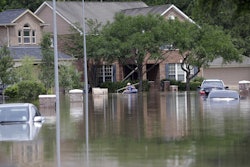Today marks the 30th anniversary of the Chernobyl nuclear plant disaster in the Ukraine, still the worst nuclear accident to date.
The results of this tragedy were so disasterous that the toll is still being determined, but estimates from experts place the total deaths in the thousands, and nearly 70,000 suffered from severe poisoning. The accident was also detrimental to the surrounding 18-mile radius of land, which permanently misplaced about 150,000 people from their homes. The land will not be livable for potentially another 150 years.
The Chernobyl plant, at the time one of the largest and oldest nuclear plants in the world, was built by the Soviet Union. It had four 1,000-megawatt reactors and resided in the town of Pripyat, not far from Kiev.
Immediately following the explosion and ensuing meltdown of one of the reactors, the Soviet government attempted to cover up the accident and keep the public in the dark on what had happened, despite the dangerous risks affecting hundreds of thousands of people. Instead, all they asked for at first was advice on how to fight graphite fires and admitted the deaths of two people.
Two days after the explosion, Swedish authorities measured dangerously high radioactivity levels in their atmosphere. The full details of the story, however, were not released until years later.
Before the accident, workers were starting tests in the plant and had shut off the emergency safety systems and the cooling system, going against regulations. The warning signs of dangerous overheating were ignored and tests continued on until xenon gases had built up enough that, at 1:23 a.m., the first explosion took place, followed by another two that blew off the 1,000-ton steel top from the reactor.
For two days, flames shot 1,000 feet in the air, expelling radioactive material. The fires continued for eight days, and potentially hazardous rain fell. Pripyat's 40,000 residents weren't evacuated until 36 hours following the initial explosion and the people of Kiev were warned about the radioactive cloud headed toward them. Dikes were built to contain the contaminated water at the Pripyat River.
Workers began covering the reactor in concrete on May 9. The International Atomic Energy Agency had finally confirmed some numbers: about 200 were directly exposed and 31 had died immediately at the plant. Even more deadly, however, was the remaining radioactive exposure in the region.
Reportedly, up to 4,000 workers involved in the clean-up died from radiation poisoning, and birth defects in the region increased dramatically. The tragedy is also responsible for the tenfold increase in thyroid cancer in the Ukraine since the explosion took place.






















